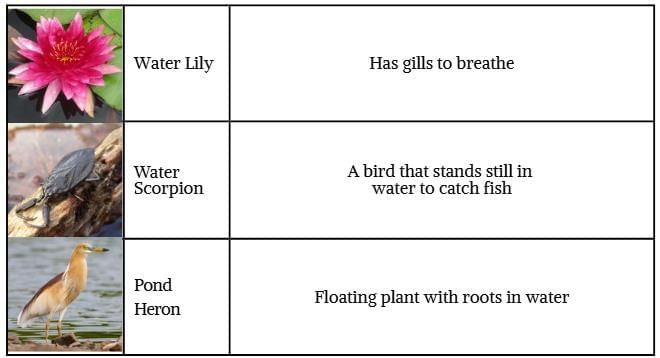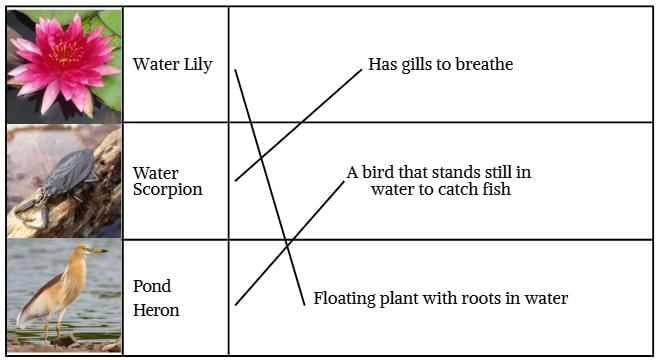Unit Test (Solutions): Water—The Essence of Life | Our Wondrous World Class 5 - New NCERT PDF Download
Time: 1 hour
M.M.: 20
Attempt all questions.
Question numbers 1 to 6 carry 1 mark each.
Question numbers 7 to 9 carry 3 marks each.
Question number 10 carries 5 marks.
Q1. True or False:
Most of the Earth’s water is freshwater.
Ans: False – About 97% of Earth’s water is salty ocean water; only a small amount is freshwater.
Q2. Fill in the blank:
The process of water changing into water vapour is called __________.
Ans: Evaporation
Q3. Name one river in India that flows into the Arabian Sea.
Ans: Narmada (Other correct answers: Tapi, Mandovi, etc.)
Q4. Match the following:

Ans:
Q5. Where do rivers usually begin?
Ans: In the mountains – Melting snow or springs in the mountains often form the source.
Q6. Identify one method shown in the picture to help refill groundwater.
Ans:
Planting more trees / Building soak pits / Making ponds – These allow water to seep into the ground and refill aquifers.
Q7. Explain the three forms of water with one example each.
Ans: Forms of water
1. Liquid: e.g., rivers, lakes, rainwater – can flow and be used for drinking, farming.
2. Solid: e.g., ice, snow – formed when water freezes, found in polar areas & mountains.
3. Gas/Vapour: e.g., steam, water vapour – formed when water evaporates.
Q8. List three activities you do in your daily life that use water, and one way to reduce water use for each.
Ans: Three activities that I do in daily life that use water, and how to reduce water use for eah:
1. Brushing teeth → turn off the tap while brushing (saves water flow).
2. Bathing → Use a bucket instead of a shower.
3. Washing vegetables → Reuse water for watering plants.
Q9. Identify three ways rivers are important for people, animals, and plants.
Ans:
- Rivers provide water for drinking—people and animals rely on river water for survival.
- Rivers support a wide variety of plants and animals. Aquatic life, such as fish, turtles, birds, and water plants, live in and around rivers, making it a habitat for many species
- Rivers help grow food and crops. Farmers use river water for irrigation, which helps plants grow and provides food for both people and animals.
- Rivers attract tourists and enable recreational activities. Activities such as boating, fishing, and sightseeing make rivers important for tourism and enjoyment, creating jobs and supporting local economies.
Q10. Draw and label the diagram of the water cycle. Write two sentences each about evaporation, condensation, and precipitation.
Ans: Diagram should show: Sun heats water (Evaporation) and Plants release water vapour into the atmosphere through their leaves (Transpiration)→Water vapour forms clouds (Condensation) → Rain/snow/hail falls (Precipitation) → Water collects in oceans, rivers, lakes (Collection).
Water Cycle
Sentences:
- Evaporation: The Sun heats water from oceans, rivers, and lakes; it changes into water vapour.
- Condensation: Water vapour cools down to form tiny droplets that gather as clouds.
- Precipitation: Clouds become heavy and water falls back to Earth as rain, snow, or hail.
|
11 videos|211 docs|10 tests
|
FAQs on Unit Test (Solutions): Water—The Essence of Life - Our Wondrous World Class 5 - New NCERT
| 1. Why is water considered essential for life? |  |
| 2. What are the unique properties of water that make it vital? |  |
| 3. How does water cycle through the environment? |  |
| 4. What role does water play in agriculture? |  |
| 5. How can we conserve water in our daily lives? |  |























